
Changes in culture temperature affect the expression levels of a range of genes involved in protein synthesis and secretion。这种影响很大程度上取决于最终降温温度和降温时间。At present, the cooling process is frequently used in the process of protein production in Chinese hamster ovary (CHO) cells to improve yield and control quality attributes。
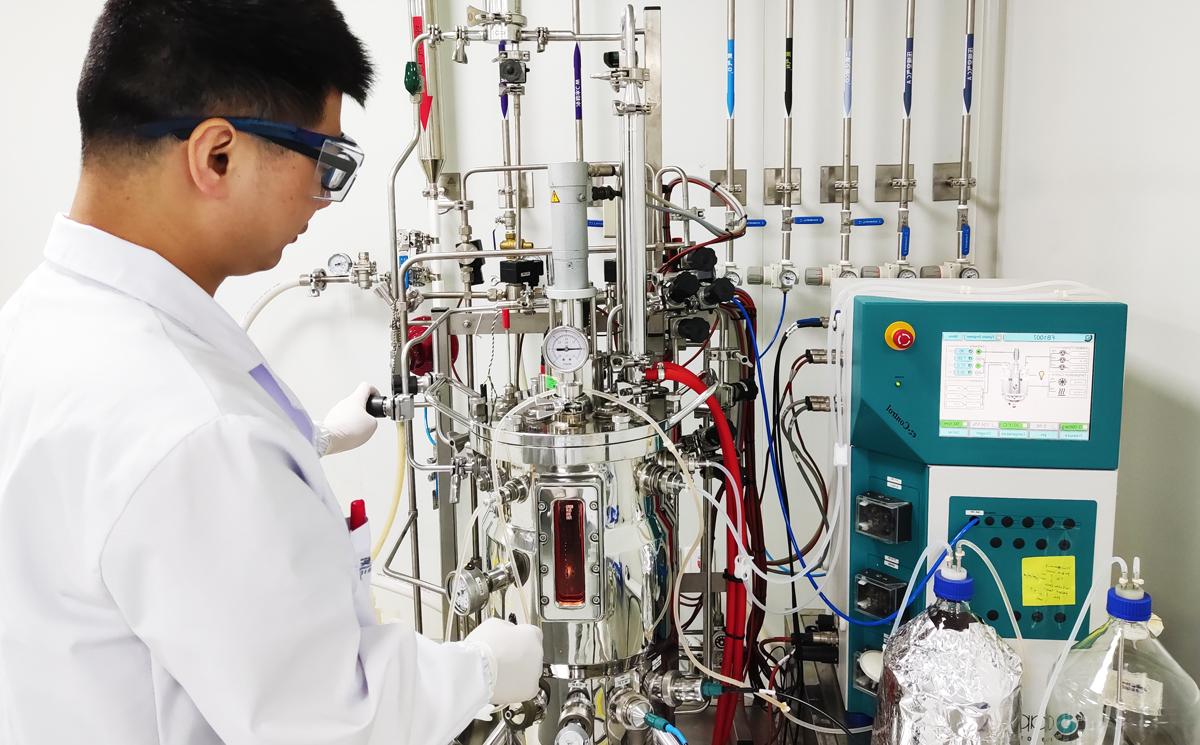
In this study, the effects of the cooling process on two CHO GS K1 cell lines were evaluated based on the yield and quality properties of the antibodies and the growth of the cells themselves。The study showed that the appropriate cooling process significantly increased the expression of mAb1 monoclonal antibody in cell line A, and the process could be scaled up to 5 L and 1,000 L, and the final mAb1 titer was 25% higher than that of the control group without cooling。In the expression of mAb2 antibody in cell line B, the cooling process did not significantly increase the final yield。In addition to affecting protein production, the cooling process was found to have significant effects on protein quality properties including charge heterogeneity, N glycosylation, and molecular size variants。
▇▇ 通过摇瓶与2 L反应器实验确定细胞株A的最佳降温工艺
In order to determine the effect of cooling on mAb1 production, 32℃, 33 ℃ were set in the shaking bottle experiment.5℃和35℃三种常见的降温水平。The cooling time was carried out at 3, 6, and 9 days to penetrate the different growth stages of the cells during the production process, including the early exponential growth stage, the peak cell density stage, and the late production stage。The experiment showed that the mAb1 titer of the experimental group with the temperature dropping to 32℃ on the 6th day decreased from 1 to 1, compared with the control group cultured at 37℃.20提高至1.31(图1a;p<0.0001)。The 10-14 day unit protein production (FIG. 1b) of the experimental group cooled to 32 ° C on days 3 and 6 was significantly higher than that of the control group that did not cool down (1.29和1.33)。The experimental group cooled on day 9 of late production showed no significant change in either titer or yield, while the small cooling on the earlier days (Day3 and Day6) (33.5℃和35℃)会导致滴度和产率的降低(p<0.0001)。Since the highest yield in the shaker experiment appeared at the boundary point of the designed experiment, the temperature setting in the 2 L reactor was changed to 32℃ in a small amplitude, and the cooling time was set at the 3rd, 4th, 5th and 6th days。The experiment confirmed that the highest antibody titer was obtained by lowering the temperature to 32℃ on day 5 (Figure 1c).。在所有转换天数中,30.Yields at 5℃ and 32℃ were higher than those in the control group without cooling (FIG. 1d), and the final titer at 32℃ was the highest。
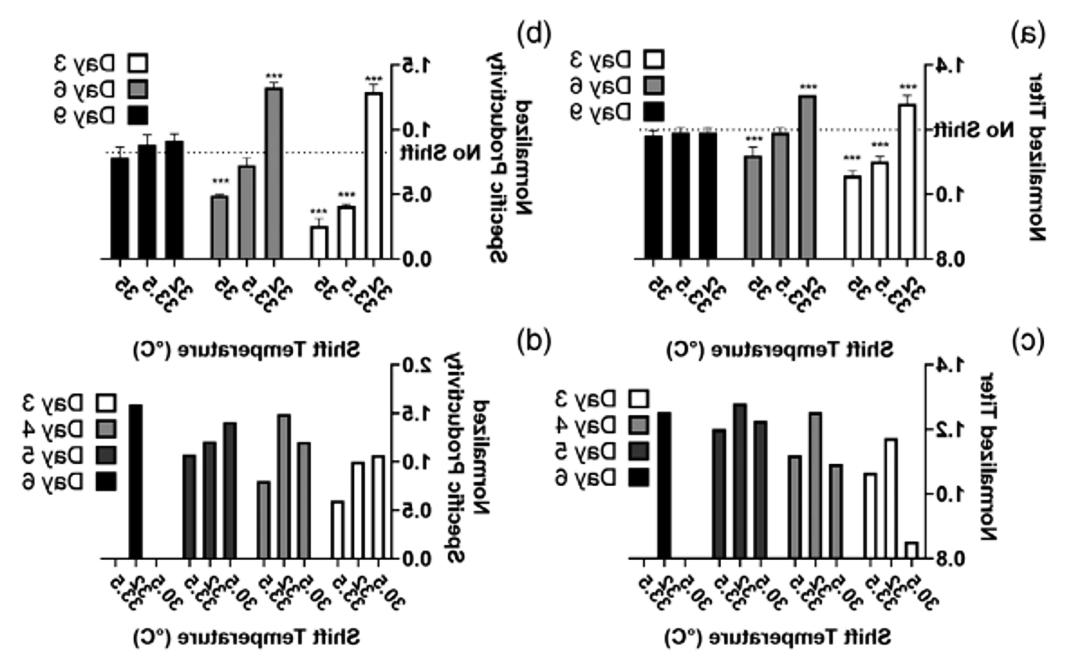
FIG. 1 Protein titer (a) and unit yield (b) in flask under temperature conversion and protein titer (c) and unit yield (d) in 2L reactor
▇▇ 降温工艺对细胞株A蛋白质质量属性的影响
Charge heterogeneity, N glycosylation, and molecular size variants were detected in shaker and 2 L reactor samples。The effect of the cooling process on protein mass properties was found to be similar in the shaker and the 2 L reactor (Figure 2).。In terms of charge heterogeneity, both the main products and the acid variants in the flask experiment were significantly affected by the cooling process (p < 0.001),降低温度会导致酸性变体含量降低(图2a)。In the 2 L reactor, the content of acid variant was significantly affected by the cooling process, and the decrease of temperature caused the decrease of acid variant, accompanied by the corresponding small increase of the main peak and the basic peak (FIG. 2b).。N glycosylation is relatively unaffected by temperature transition in the shake flask experiment, and the maximum range of variation between different conditions is less than 4% (Figure 2c).。In the 2 L reactor experiment, cooling resulted in only a slight increase in G0F (Figure 2d)。For the molecular size variants, the shaking flask experiment found that cooling caused significant difference, and HMW increased at lower temperatures, while different cooling days had no significant effect on HMW proportion。The temperature was reduced to 32 ° C and the HMW proportion increased to about twice that of the control group (Figure 2e).。There was no significant difference in the molecular size variants in the 2L reactor under different cooling days or different cooling temperatures, and the proportion of HMW was all about 2% (FIG. 2f).。
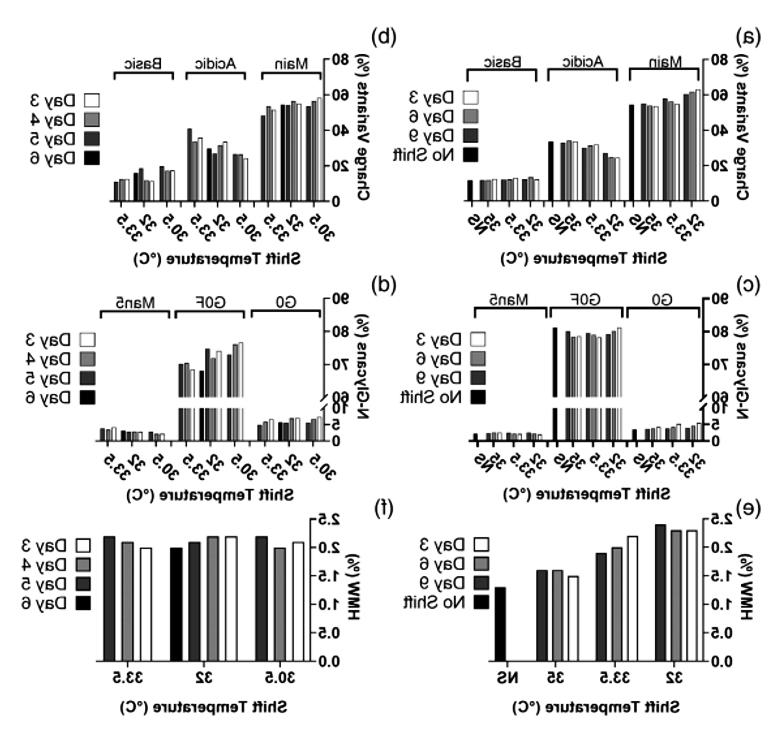
FIG. 2 Cell line A quality attributes (charge heterogeneity, N glycosylation, molecular size variants) shake flask (a,c,e);2 L reactor (b,d,f)
▇▇ Cell line A was validated for 5 L scale and 1,000 L mass production after cooling process optimization
In order to verify the scaleability of the cooling process, the production operation data were compared in a 5 L reactor with or without cooling, and further verified in a 1,000 L large-scale production under the cooling process。
In the 5 L reactor, the cell growth curves of the control group and the experimental group were similar overall (FIG. 3a), except that the VCD and cell viability curves after the cooling process were slightly higher than those of the non-cooling group (FIG. 3a, b).。The survival rate of the control group decreased to about 90% after peak VCD, increased a few days later, and began to decline again at about 10 days until it finally reached about 90%.The cells in the cooling treatment group remained more than 95% active。VCD continued to decline after the peak, while viability remained high, indicating complete lysis of unhealthy cells。It is worth noting that the cooling occurred on day 5 while the increase in protein titers did not appear until after day 10, when the antibody concentration in the experimental group was significantly greater than that in the control group (Figure 3c).。实验组的最终mAb1蛋白滴度比对照组高约25%。After cooling, glucose consumption was significantly reduced (data not shown), but lactic acid content was not significantly affected (Figure 3d).。降温后氧气通量显著降低(图3e)以保持40%溶氧设定。pCO2There was a slight increase with temperature, but by the end of production there was no significant difference between the two conditions (Figure 3f).。
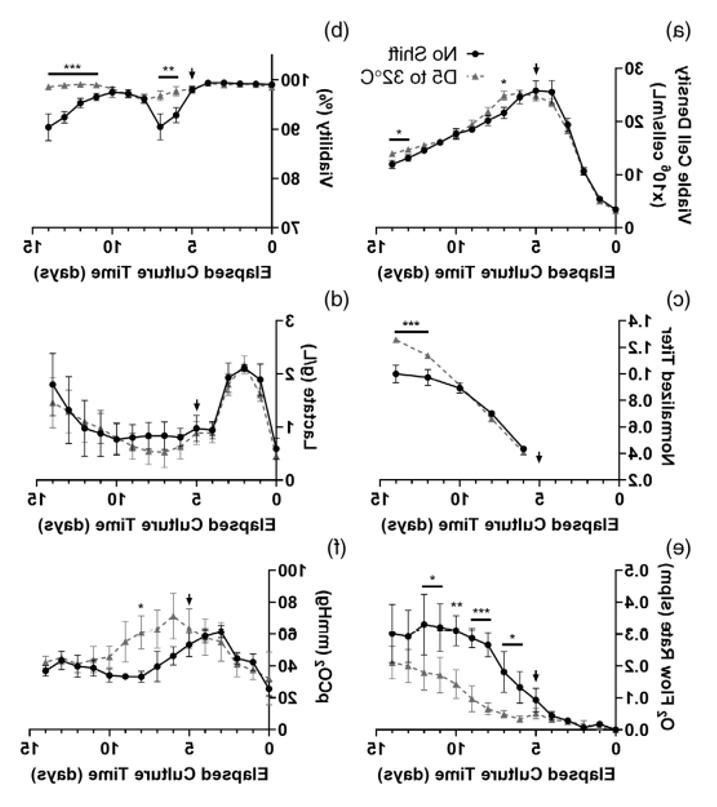
FIG. 3 Production and operation data of cooled (Day5, 32℃) and uncooled (a) VCD (b) activity (c) titer (f) lactate concentration (e) oxygen flux (f) partial pressure of CO2 in a 5 L reactor
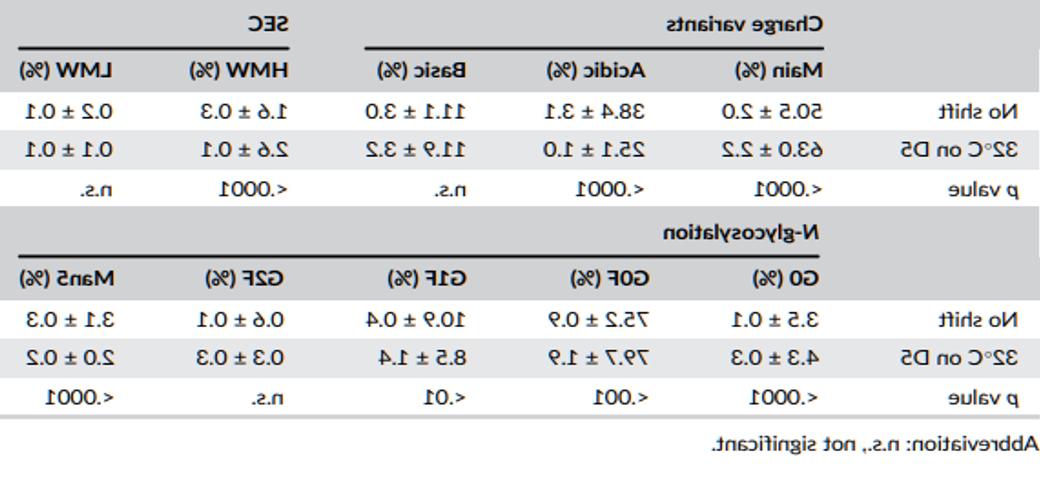
表1 5 L反应器蛋白质量属性对比
5 L反应器中的蛋白质质量属性与先前筛选实验的相似。For charge heterogeneity, the main and acidic peaks of mAb1 are most affected (Table 1).。The main peak increased by about △13%, while the acidic variant decreased correspondingly, and the alkaline peak did not change significantly。大多数N糖基化种类具有显著统计学差异。However, the largest difference observed was a G0F change of less than △5%, which does not cause clinical problems。The difference between G0 and Man5 ratio is most significant under cooling and uncooling conditions, and G0 increases by about △0 under cooling process.8%,Man5减少约△1.1%。The molecular size variants followed a similar trend to the initial screening experiment, with HMW content ranging from 1.6%增加到2.6%,增幅较小,下游纯化能够去除。

表2 1,000 L反应器抗体质量属性
在1,000 L临床生产规模应用此前的降温工艺。The VCD curve and cell viability were similar to the scale of the 5L biorereactor, and the peak VCD reached about 25E6 /mL on the 5th day, and the final viability was greater than 95% (FIG. 4).。The increase in final titers caused by the cooling process can also be transferred from the 5 L scale to the 1,000 L bioreactor scale, with a titer increase of about 25% relative to the control group。Analysis of protein quality properties showed that all quality indexes had similar trends to those of the 5 L reactor。The contents of acid peak and main peak in 5 L bioreactor were 25, respectively.1±1.0%和63 ± 2.2%,1,000 L中酸峰为21.1 ± 1.2%,主峰相应增加到70.3 ±3.0%(表2)。
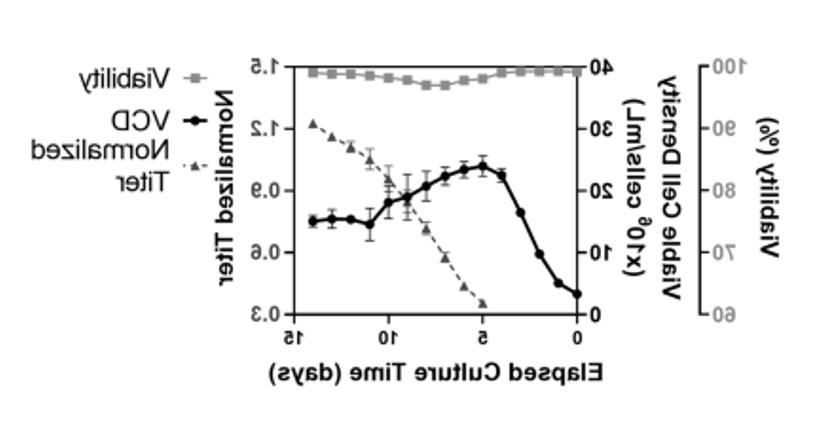
图4 1,000 L反应器生产运行数据
▇▇ 降温工艺对于细胞株B产量和质量属性的影响
Cell line B belonging to the CHO GS K1 cell line was screened by a similar full-factor cooling process。在第3天或第6天,将温度从36.5 ° C was reduced to 30 ° C, 32 ° C or 34 ° C and compared with a control group that did not cool down。
The growth curve of cell line B showed that VCD values were significantly reduced at all transition temperatures after cooling during the exponential growth phase on day 3 (Figure 5a).。After the conversion on day 6, the experimental group achieved a VCD peak similar to the control group at all three temperatures, and maintained a slightly higher VCD in subsequent cultures。Similar to cell line A, the viability of cell line B under either cooling process remained at a higher level in the later stages of production than the control group (Figure 5b).。In terms of antibody titers, except that the yield of the experimental group cooled to 34℃ on day 6 was not significantly lower than that of the control group, the final titers of the other cooling groups were significantly negatively affected。Compared with the control, both cooling to 30 ° C and 32 ° C reduced antibody unit yield, while a small drop to 34 ° C had no significant effect。The live cell density integral (IVCD) showed a similar trend to the VCD map, i.e. the experimental group that cooled on day 3 had a lower IVCD than the control group and the experimental group that cooled on day 6 had a slightly higher IVCD than the control group (Figure 5e).。
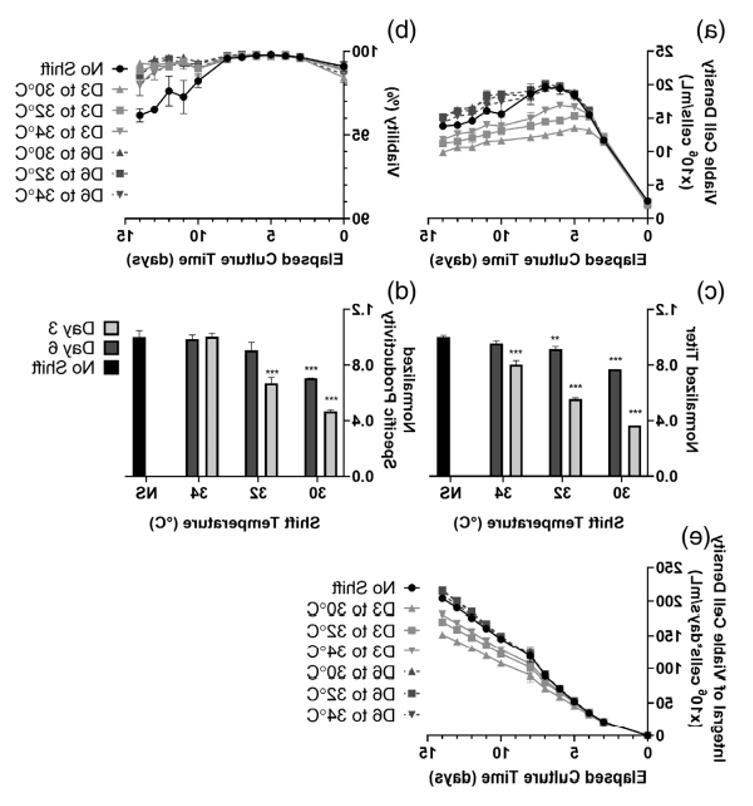
图5 有无温度转换细胞株B的生长情况及抗体产量
分析产物的mAb2质量属性。For charge heterogeneity, the cooling process has a significant effect on the charge variable distribution of mAb2 (Figure 6a).。When the temperature is lowered more, or the cooling time is advanced, the acidic peak is significantly reduced, and the alkaline peak is increased。The end result of the change in the charge variable is that the main product is highest under the condition of small cooling (down to 34 ° C on day 6), and significantly reduced under the condition of more cooling or earlier cooling (32 and 30 ° C on day 3)。N糖基化仅受第3天早期温度变化的显著影响(图6b)。通过多变量方差分析,最终降温不是一个显著因素。In cell line B, the cooling process did not affect the proportion of molecular size variants, and HMW content was less than 1% in both the experimental and control groups (Figure 6c).。
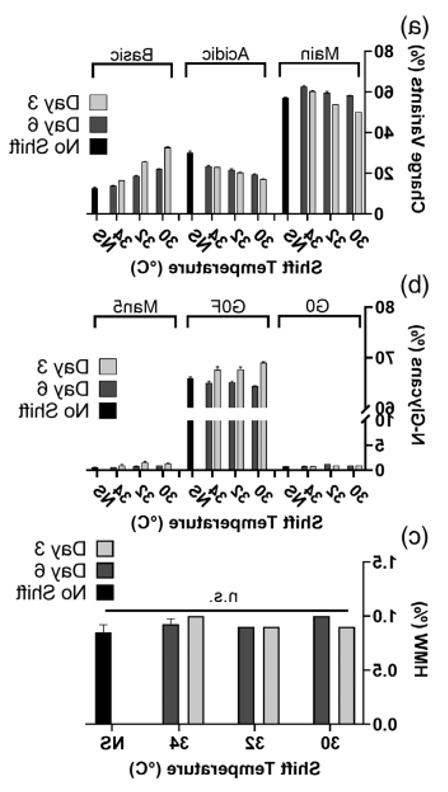
Figure 6 Mass properties of cell line B (a) charge heterogeneity (b) N glycosylation (c) molecular size variants
▇▇ 讨论

许多研究表明,可以通过降温减少酸性电荷变量。The present study also showed that, although the effects on the yield of the two cell lines were different, the acid charge variable of mAb1 and mAb2 was significantly reduced with decreasing temperature (Figures 2a, b, and 6a).。It is hypothesized that the decrease in acidic variants of proteins under cooling conditions is caused by slowed degradation kinetics or increased cell viability, which prevents the release of degrading enzymes that could damage the end product。The mAb2 peak of cell line B increased but the final titer did not, suggesting that the cooling process may mainly improve the quality but not the yield during protein production。两种细胞系之间的降温时间的影响也不同。In both screening experiments, cooling time did not significantly affect mAb1 charge isomers (FIG. 2a, b).。For cell line B, cooling on day 3 had a stronger effect on alkaline peak than cooling on day 6 (FIG. 6a), which may be related to cell growth inhibition caused by early cooling of cell line B (FIG. 5a, e).。The increase of mAb2 alkaline peak in cell line B at low temperature may be due to the decreased expression of carboxypeptidase, resulting in incomplete cleavage of C-terminal lysine。In summary, the effect of cooling on the charge variable is primarily driven by how much the temperature is reduced, not the cooling time。
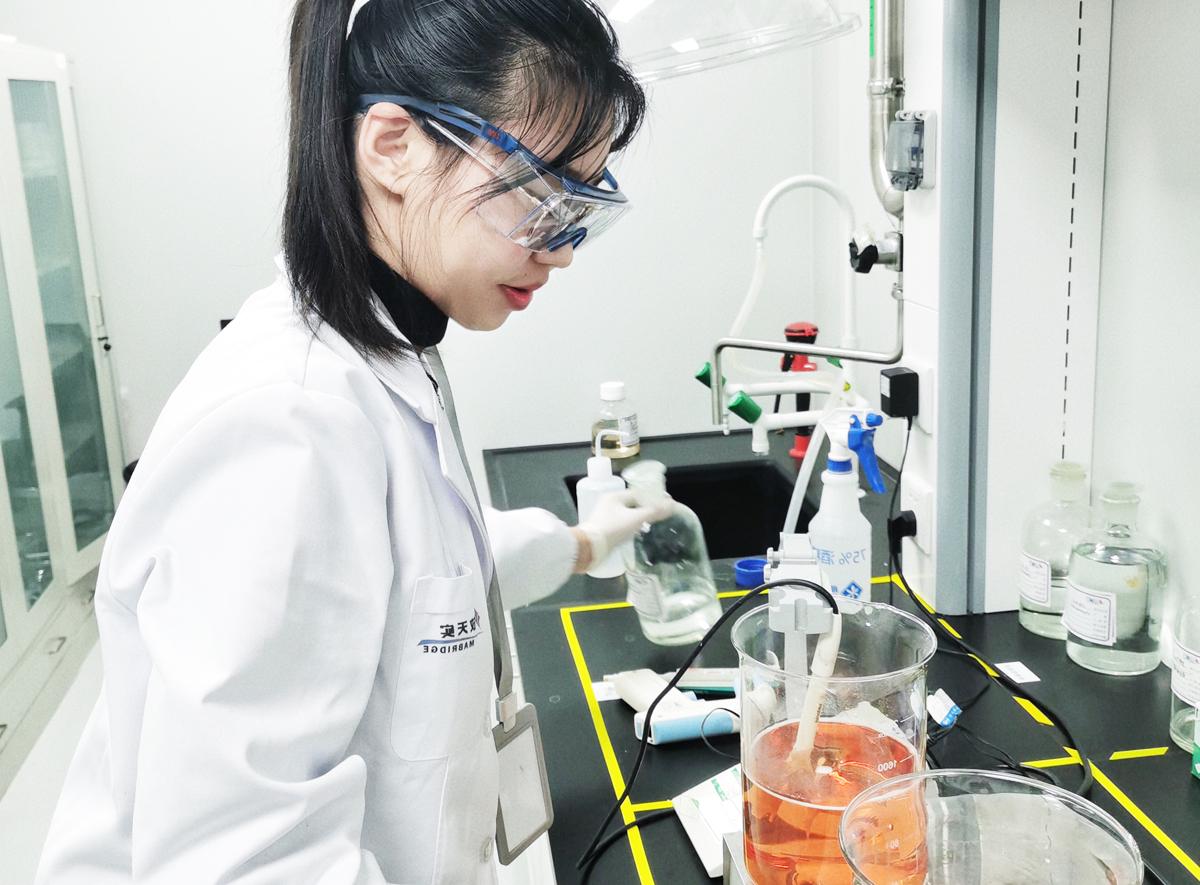
Other protein quality properties, including N glycosylation and molecular size variants, were affected by the cooling process, and the effects differed between the two cell lines。mAb1 的 N糖基化相对不受降温工艺的影响。The most significant differences between the experimental and control groups for mAb1 were changes in G0 and Man5, including a difference of about △1% and a slight reduction in galactosylation。The glycosylation of mAb2 was significantly affected by early day 3 cooling, which resulted in a reduction in galactosylation similar to that of mAb1, G1F and G2F respectively &△5% 和 &△0.8%,G0F 相应增加 &△3%(图 6b)。For the molecular size variants, the HMW proportion of mAb1 increased by about two times at lower cooling (Figures 2e, f), but there was no significant change in the HMW proportion of mAb2 at all cooling processes relative to the control group (Figure 6c).。The LMW of mab2 was unaffected by the cooling process under all conditions, and the LMW of both cell lines was less than 1% under all test conditions。The different effects of cooling processes on aggregation between mAb1 and mAb2 are not surprising, as some literature reports an increase in aggregates under cooling processes, a decrease in some aggregates, or both, depending on other process parameters。The exact mechanism by which lowering the culture temperature may increase or decrease aggregation is complex and cannot easily be attributed to any single cause。
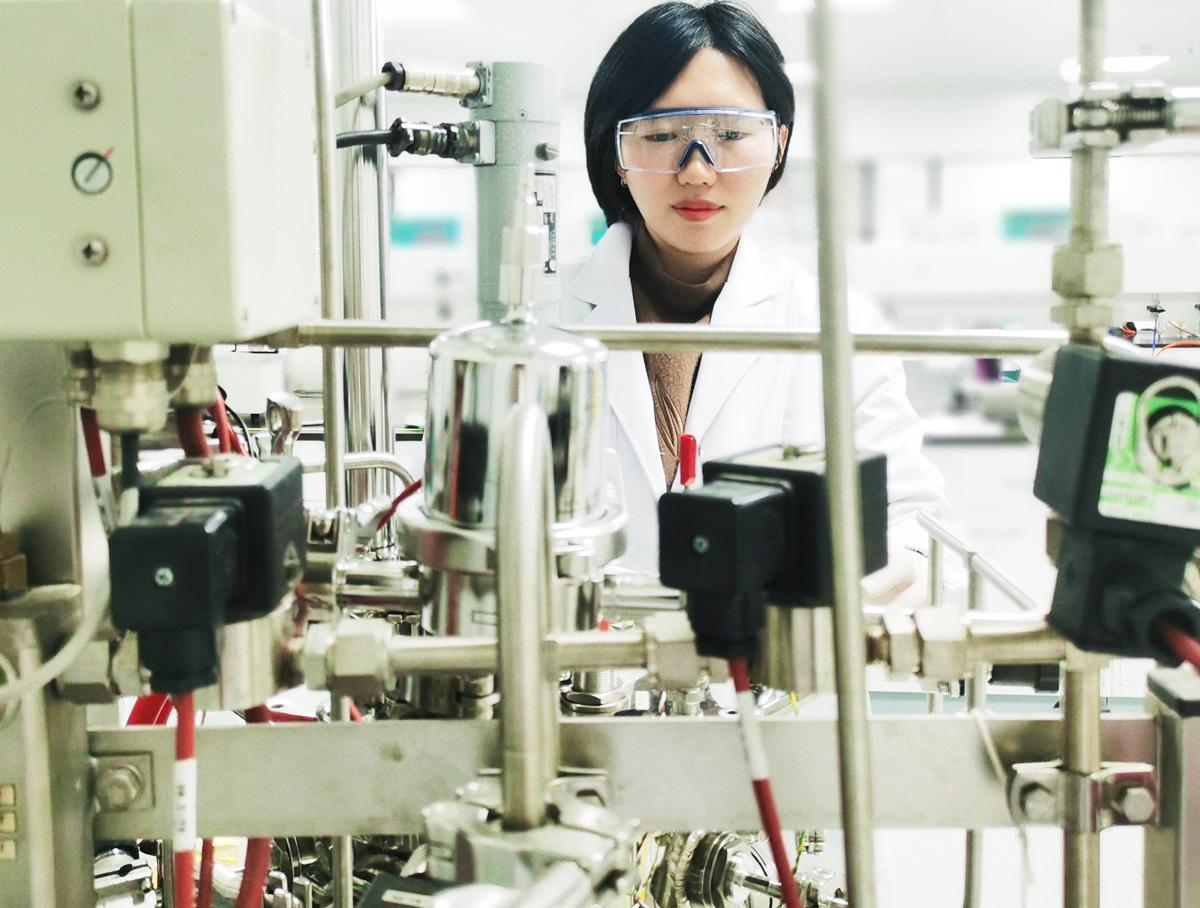
降温工艺可以从多方面促进蛋白质的生产。This study successfully scaled up the cooling conditions identified in the shaker screening experiment to a 5 L reactor scale (Figures 1, 3) and to a 1,000 L production scale, while achieving similar improvements in mAb1 productivity and protein quality (Figures 4 and Table 2).。A common benefit of the cooling process is increased productivity and final titer of certain cell lines, with the final mAb1 titer of cell line A in this study increased by more than 25% (Figure 3c).。Although the titer of mAb2 did not increase with temperature (Figure 5c), the cooling process may help control protein mass (Figure 6a).。In both cell lines, the final cell viability remained higher under all cooling processes。This may reduce the variety of host cell proteins released by dead and membrane-damaged cells and reduce the likelihood of protease degradation, thus reducing the burden of downstream purification。It was found that the unit glucose uptake rate of cell line A decreased after cooling, while the lactic acid curve did not differ significantly from that of the control group (FIG. 3d). The increase in antibody titer could be inferred that the energy of cell line A was more efficiently redistributed to product formation with the change in temperature。Secondly, the cooling process reduced the oxygen flux (Figure 3e), most likely due to reduced cell metabolism and increased oxygen solubility at low temperatures。Reducing the oxygen flow rate is particularly important in mass production to reduce the cutting and destruction of cells by bubbles, reactor bubbling and oxygen supply problems。
In summary, this study demonstrates that there are many benefits to incorporating the cooling process into the protein production process, and that temperature changes may be helpful in controlling quality attributes even in the absence of titer improvements。

参考文献:
McHugh KP, Xu J, Aron KL, Borys MC, Li ZJ. Effective temperature shift strategy development and scale confirmation for simultaneous optimization of protein productivity and quality in Chinese hamster ovary cells. Biotechnol Prog. 2020 May;36(3):e2959. doi: 10.1002/btpr.2959. Epub 2020 Jan 17. PMID: 31930722.







